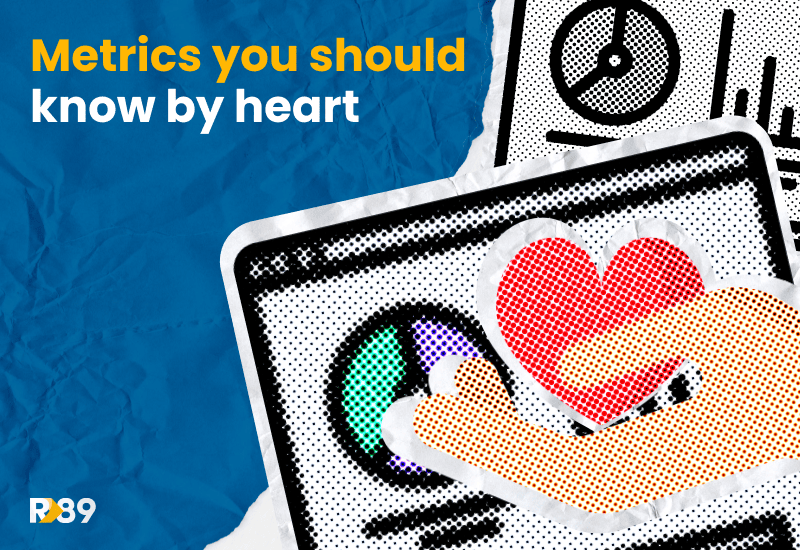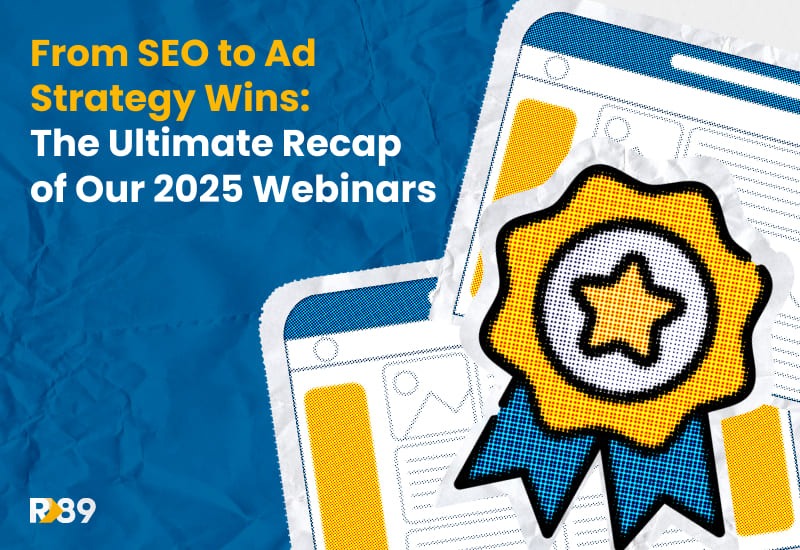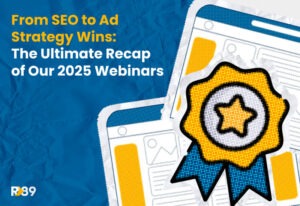Mastering your website’s ad monetization starts from one crucial step: understanding your metrics to find opportunities for optimization. Keeping track of your website’s insights is key to unleashing your ad revenue potential, improve your user experience, and drive your site’s growth. We know it can be overwhelming to dig into all the data you have, so we’re going to untangle the basics by breaking down 4 metrics publishers should track: CPM, Ad Viewability, RPM, Ad Fill Rate.
Let’s see what they are about and how you can use them in your ad strategy!
CPM
What is CPM?
CPM or Cost per Mille is a metric that tells you how much an advertiser is willing to spend on your website per one thousand impressions. It’s an essential insight for a publisher, since it helps to understand the worth of their sites when it comes to setting a price for the ad inventory.
How to calculate CPM?
To calculate your CPM, you need to know your total revenue and your total number of ad impressions. Take those numbers and put them into this formula:
CPM = (Total Revenue ÷ Total Impressions) x 1000
Check out this example: An advertiser spends 100€ on an ad and it gets 100,000 impressions. What’s the CPM then? Let’s put it in the formula.
Total Cost: 100€
Impressions: 100,000
CPM = (100 ÷ 100,000) x 1000
CPM = 1€
This means the advertiser paid 1€ for every 1000 impressions of their ad. Easy, right?
How to improve CPM?
Improve your ad placement
The more visible your ads are, the better results they’re going to get. An ad buried in the depths of your website will naturally fetch a lower CPM. Check out these ad placement strategies for some ideas on how to find the best places on your website for your ads.
Boost your engagement
Engaged users who stick around generating impressions and interacting with your content can significantly increase the value of your ad space. Don’t you ever forget, quality over quantity is the way to go.
Display ads relevant to your user
Ads relevant to your audience can command higher CPMs. So, keep your audience in mind when choosing ad content.
Ad Viewability
What is Ad Viewability?
Viewability is another metric in programmatic advertising used to track how viewable an ad is. An ad needs to be properly viewed for it to make an impact.
The viewability rate considers the impressions that were actually viewed by the user compared to the total number of impressions your ads received, and it does this by following some standards.
According to the IAB viewability standards, for an impression to be considered viewable it should meet these requirements:
- The ad must be at least 50% in the viewport for at least one second.
- If the ad has over 242.000px, then at least 30% of it must be shown on the screen.
- Video ads must also be in the viewport and for at least two seconds.
How to calculate Ad Viewability?
You can find out your ad viewability rate, along with other valuable metrics for publishers in your Publisher Dashboard! It’s the easiest way to track your statistics and it just takes one quick glance.
In the “Revenue” tab, you will find your viewability rate and a full breakdown of other essential metrics to improve your ad strategy. Keep this statistic in check and try to maintain it at about 70% or over. Advertisers will love you for it!
How to improve Ad Viewability?
Place your ads smartly on your site
Identify the most viewable places on your website and slap those ads there (without disrupting the user experience!). Review these tips from our AdOps expert to place ads strategically and maximize viewability.
Use the right ad formats
Try using high-value rich media ad formats. These not only command high CPMs but are also more visible. You can also opt for sticky banners that keep the ad viewable while the user scrolls through a page. Make sure to choose the best ad formats that fit your website and don’t interrupt user’s experience. If you want to know more about ad formats and get your basics straight, take a look at this article to learn how to choose the perfect ad formats for you!
Get fast-loading ads
Ad latency impacts your Core Web Vitals (your website’s performance metrics) and therefore your viewability and ad revenue. The longer your pages take to load, the faster your user is going to surf away, so you can wave goodbye to that impression for sure. One of our top methods to reduce latency here at Refinery89 is Lazy Loading. It’s a technique used in programmatic advertising where ads load only when they become visible. This can help improve your website’s Core Web Vitals.
RPM
What is RPM?
RPM or Revenue per Mille (otherwise also called page RPM) is the estimated revenue of a webpage for every 1000 monetizable page views. In this case, monetizable pages are those webpages with ads on them to be filled.
How to calculate RPM?
To calculate your RPM you need your total revenue and your monetizable page views, which you can get from your analytics tool of preference. Once you have those metrics in hand, it’s time to bring out the formula:
RPM = (Total Revenue ÷ Monetizable Page Views) x 1000
Let us explain it with an example: Last month you made a total revenue of 5,000€ from the ads on your website and you had 500,000 impressions on your monetizable pages.
Total Revenue = 5,000€
Monetizable Page Views = 500,000
RPM = (5,000 ÷ 500,000) x 1,000
RPM = 1€
How to improve RPM?
There are many things you could do to increase your RPM, from creating quality content to tracking your Core Web Vitals, and improve ad viewability. But one thing that can work wonders for your metrics is optimizing your ad monetization setup.
We know it sounds like a lot of work, but that’s what AdTech partners like us Refinery89 are here for! With our Single Tag solution, you can maximize your ad revenue easily. It’s a simple line of code with which you’d be able to connect to our header bidding solution with access to over 25+ premium demand sources. With us you can also leverage our ad revenue-boosting technologies. An All-in-One ad management solution makes your life so much simple!
Ad Fill Rate
What is Ad Fill Rate?
Ad Fill Rate is the ratio of ad requests to ads displayed on your website. This metric tells you how often you fill your ad spaces with ads.
How to calculate Ad Fill Rate?
Calculate your ad fill rate by taking the number of ad impressions and dividing it by the number of ad requests. The percentage you get from it shows the frequency with which you successfully fill ad units with ads.
To calculate your ad fill rate, you’ll need to have your total number of ad impressions and the total number of ad requests on hand. Then place them in this magical formula:
(Total number of ad impressions/total number of ad requests) x 100
Let’s see an example: Your website made 50,000 ad requests, but you got 40,000 ad impressions. If you put this into the ad fill rate formula it should look like this:
(40,000/50,000) x 100 = 80%
This total means you have an ad fill rate of 80%. This 80% is the percentage of ad requests that are filled on your site.
How to improve Ad Fill Rate?
Get a grasp of your Fill Rate
Let’s start from square one and do the proper data analysis. Take note of your current Ad Fill Rate by calculating it or retrieving the metric from your analytics tool of choice. Then, comprehend its value in relation to your CPM and evaluate RPM. That’s how you can later decide what needs to be done to improve your Fill Rate.
Switch to Header Bidding
Header bidding is the trendiest way to optimize your site’s ad monetization. It’s the most efficient way to sell your ad space and this is why: its Real-Time-Bidding system. In case you need a reminder, in programmatic advertising your ad inventory is sold through an auction. With header bidding, ad networks compete by bidding simultaneously, filling the ad request way faster.
Improve your ad placement
Placing your ads strategically is key. Find those hotspots of your website that guarantee a better viewability. This can help you enhance your fill rate because viewable ads translate to more ad impressions and that’s super attractive for advertisers.
Try offering different ad formats
Widen your horizons by offering a variety of formatów reklamowych, on your website. This allows more demand sources to compete for your ad inventory. Also, some ad formats are easier to adapt to different ad placements so there’s higher chances to get those spaces filled with ads. By having more options, you increase the number of opportunities for advertisers to serve ads on your website. Take a peek at these high-value ad formats you could include to boost your ad revenue!
Track your metrics, get more ad revenue!
The biggest takeaway here is that keeping constant track your metrics goes a long way. By understanding your website’s ad monetization you’ll be able to fine-tune your ad strategy to reach your dream goals.
At Refinery89 we have the tools and the expertise to help you make the most out of your website’s ad monetization. Get in contact with our team to discover our ad monetization solutions to boost your earnings and get access to your own Publisher Dashboard to track your most valuable metrics in full detail! Start maximizing your ad revenue ASAP!








